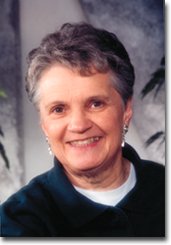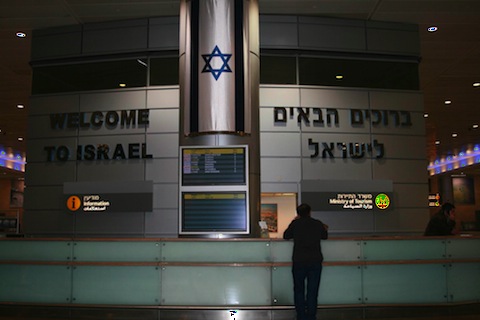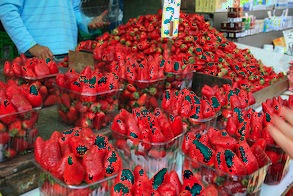
By Doreen Kerby
I was thrilled. I was flying Air Canada from Toronto to Tel Aviv. In nine hours a whole new world was about to unfold. The new Ben Gurion International Airport is impressive and rated the best in the Middle East. Our guide, Rivka Berman was there to meet us and she was remarkable too. Intelligent, patriotic and well informed, she made the trip memorable.
On arrival, we got Israeli shekels from an ATM and boarded an ultra modern bus called The Nazarene Express. Like the 70,000 Canadians who visited Israel last year, we felt safe and welcome.

Tel Aviv is a relatively new city, only 100 years old. It has a population of 400,000 having absorbed refugees of many nationalities and each has put their cultural signature on the city.
Its story begins in the late 1880s when Jews living in Jaffa (largely Arab) wanted a place of their own. The first community, Neve Tzedek, was built on the sand north of Jaffa in 1887 when 48 Jewish families turned a barren wilderness into the first Jewish settlement outside Jaffa’s Old City walls. It has always been popular with artists and intellectuals and now over 100 years old, the property is highly valued.
Tel Aviv is Israel’s business, financial, and cultural center. Its cafes, upscale shopping, and cosmopolitan lifestyle make it a popular tourist destination. The beachfront is famous for its thriving nightclubs and bars. As they say,” Go to Jerusalem to pray; go to Tel Aviv to play.” It is “the city that never sleeps.”
The weather is another reason for its popularity. Summers are hot and humid but springs and falls are very pleasant. Winter is bearable too with the coldest day ever recorded –1.9C!
In contrast, Jaffa’s history goes back thousands of years. Noah’s son, Japheth, is credited with building the city after the flood. This is where the Prophet Jonah was thrown up on the shore by the whale. Hiram brought Lebanese cedars to this port to build Solomon’s Temple in Jerusalem and it was under Solomon that Jaffa became the nation’s seaport making it the world’s oldest working harbour.
Because of anti-Jewish pogroms in Eastern Europe in the 1920s, boatloads of immigrants arrived in Tel Aviv. With help from the Jewish National Fund, 60 families purchased 12 hectares divided into 60 lots, stretching six miles, from Neve Tzedek to the Yarkon River. The first modern Jewish town was born in 1909.
The name Tel Aviv is derived from Tel, which is defined as an archaeological site that reveals layers of civilization built one over the other. Aviv is Hebrew for “spring” symbolizing the renaissance of an ancient Jewish homeland.
In 1921, anti-Jewish riots broke out in Jaffa due to the arrival of so many Jewish immigrants. Jews left Jaffa to settle in Tel Aviv. By 1930 it was home to over 100,000 people.
Those who arrived in the 30s were German intellectuals escaping Nazism. Some were architects influenced by the Bauhaus School of Architecture. Along streets such as Rothschild, Bialik and Allenby there are over 3,000 buildings in the Bauhaus style, which is distinctive for its clean functional lines and box-like balconies. An ultra modern White City, was created.
Rothschild Boulevard was named after the Jewish family of financiers who supported the Zionist cause. This wide boulevard is shaded along its entire length by lovely trees. A Founders’ Monument names the early settlers and illustrates the development of Tel Aviv from its earliest beginnings. In 2003, UNESCO designated the Bauhaus area as a World Heritage Site.

Tel Aviv developed on four miles of beautiful beaches. Walk or jog for miles along the beachfront promenade from the north of the city, to Jaffa in the south.

Throughout the war years, Tel Aviv was a center for Zionist resistance against Britain’s anti-immigration policy. Shiploads of refugees fleeing Nazi occupation were refused entry and sent back to Germany. In desperation, Jewish leaders resorted to illegal immigration and violent resistance. The Haganah Museum, The Etzel Museum and The Jabotinsky Institute tell the story of the resistance fighters’ struggle against British authority, a crime punishable by imprisonment and death.
In 1947, the UN voted to give Jews a homeland in Israel. On May 14, 1948, Israel declared its statehood at 16 Rothschild Boulevard, known as Independence Hall. On May 15th, Egypt, Jordan, Syria Lebanon and Iraq invaded the country, starting the War of Independence that lasted for 15 months.
The 1950s saw the building of the Museum of the Jewish Diaspora, the Golda Meir Center for the Performing Arts, home to the Israel Opera, Tel Aviv University, and the Mann Auditorium, home for the world famous Israel Philharmonic Orchestra.
The Carmel Market is one of the biggest open-air markets in the Middle East. It is crowded and noisy but it’s fun and exciting. They sell everything: clothes, souvenirs, fresh fruit, vegetables, spices, olives and nuts. Fresh squeezed pomegranate or orange juice is delicious and inexpensive. Don’t be afraid to barter. The merchants expect it.

Tel Aviv is a miracle city. One hundred years ago there was nothing here but sand dunes. Today there are skyscrapers and high-tech office buildings, and luxurious waterfront hotels. But more than that – the city has welcomed hundreds of thousands that needed a home. It’s a great accomplishment.
For more information visit www.goisrael.ca
David Intercontinental Hotel – 03-795-1111